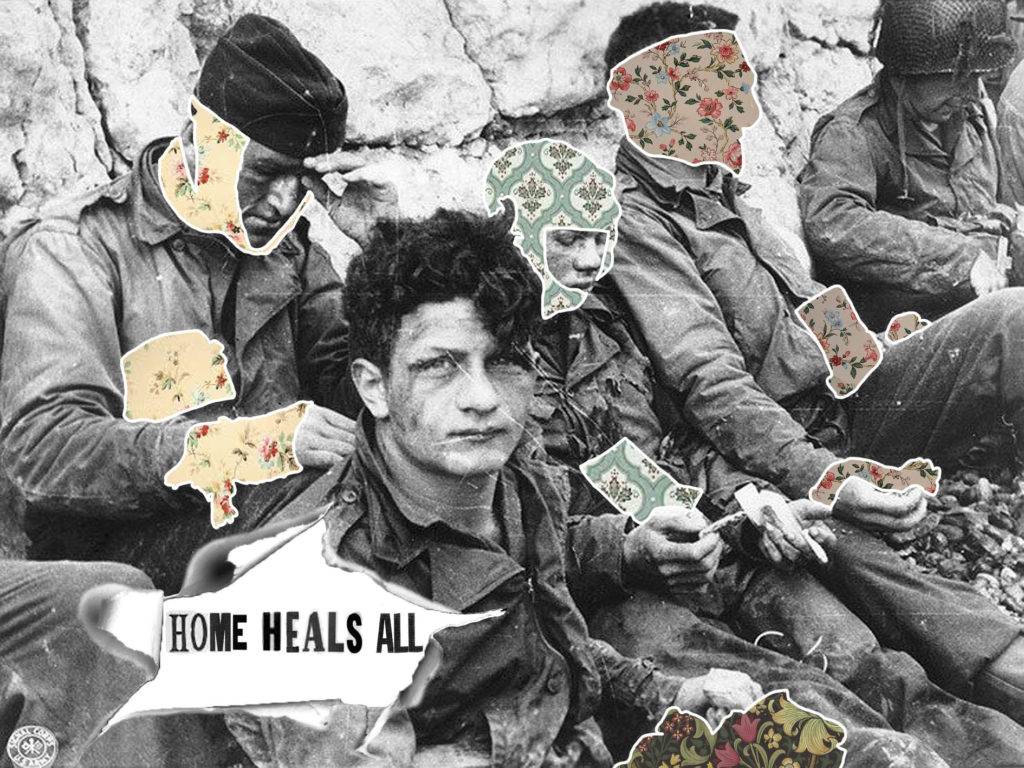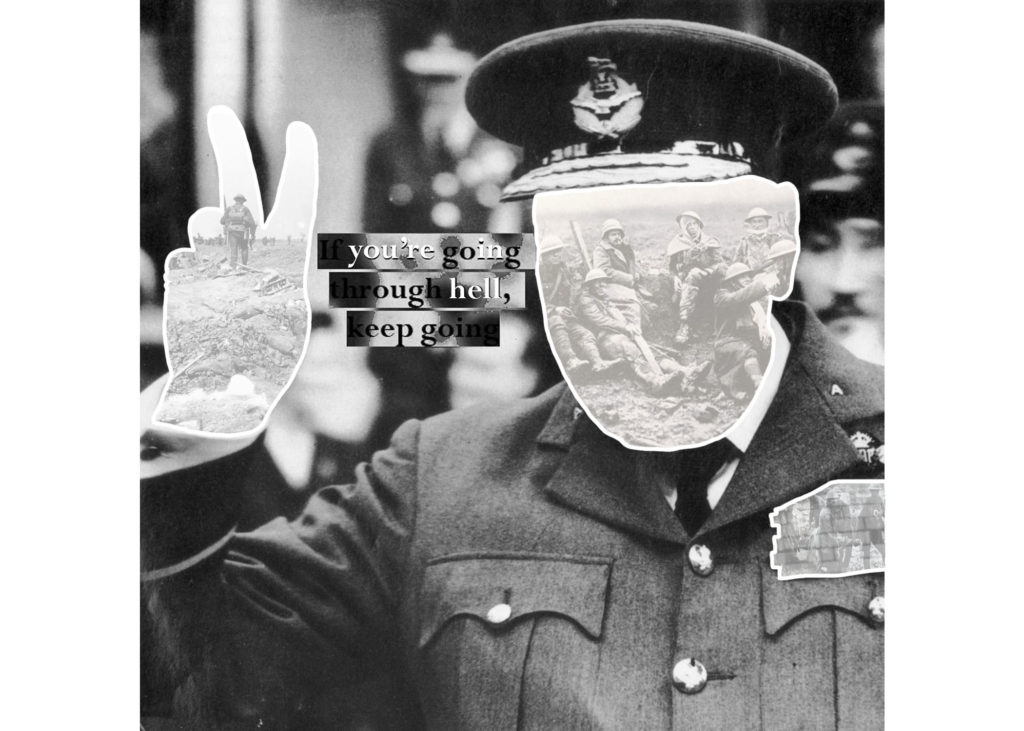After taking inspiration from the photo-montage style of photography/art, I was able to develop a series of photo-montage pieces. The following are examples of experimental, trial photo-montages that I created using Photoshop, using archival images that I found online:


The above process is the one I used in Photoshop to create the above image. From top left to bottom right:
Left: I researched a range of 1900’s wallpapers that I would use as the background for my image,

Above is a gallery showing the process I used to create the final image (seen above). From top left to bottom right:
Left: I lowered the opacity of the eraser tool to 50% in order to fade the background of a war scene that I would be replacing the face and hands with. I did this in order to make sure the definition between the foreground (Churchill) and the background (the war scene) was obvious, and also to emphasize that the sacrifice of millions of lives was merely an afterthought to the victory of political leaders during the war.
Middle and right: I outlines the hands and face of Churchill in order to show contrast between the background and foreground. I also feel that by creating an outline, my work mimics the style of many very well known photo-montage artists, who used physical cutting and sticking to create their work.
Bottom row: The bottom row shows the process of creating the text that I placed over the top of the image to act as a centre piece/ main focal point. I took a real quote from Churchill, and decided to emphasize certain words/letters using white text to show contrast between the quote and the reality of war. To create this text, I copied the image of highlighted text and pasted it back onto the image (to give the contrasting background effect) and then placed a second layer of white text over the original black text to show contrast between the words.











